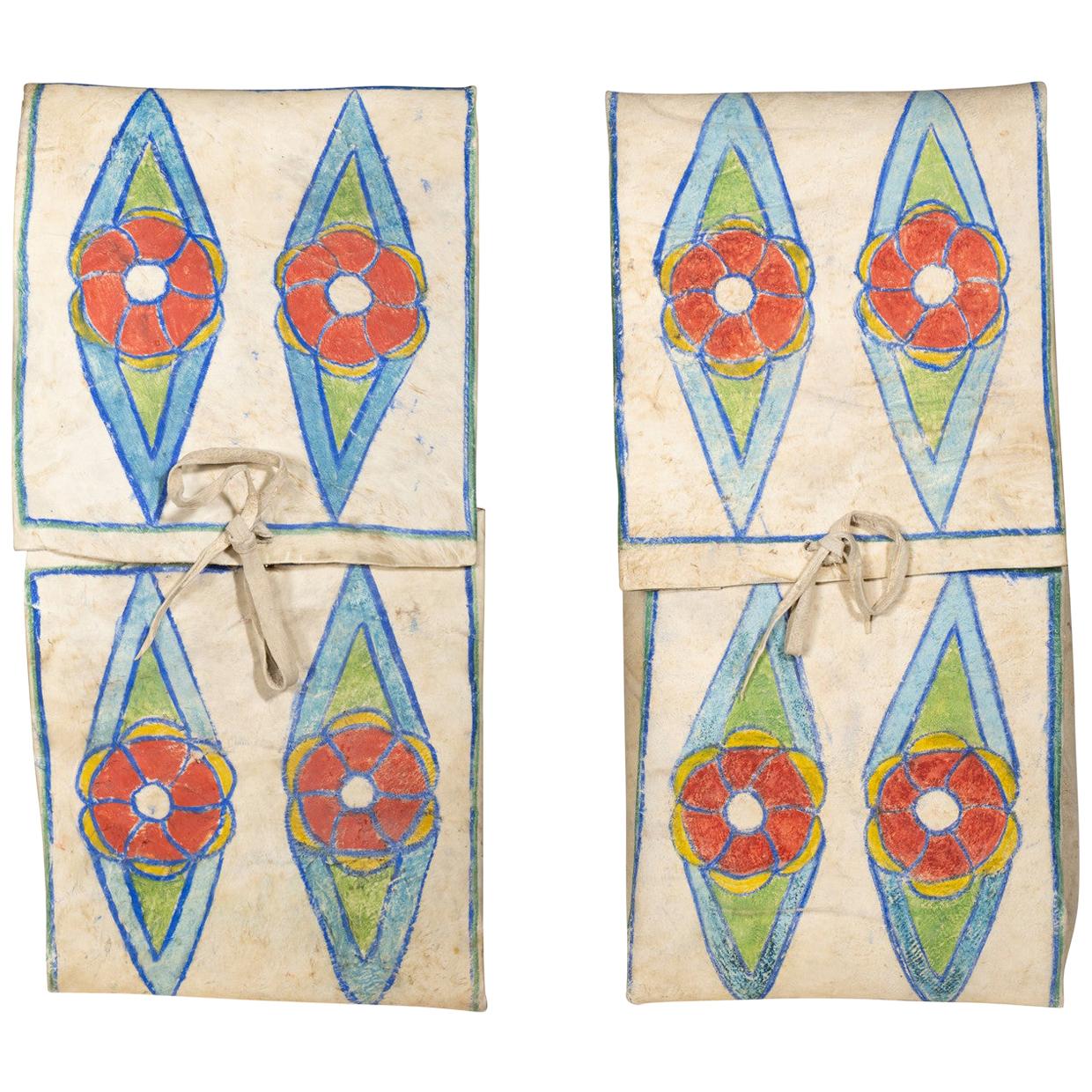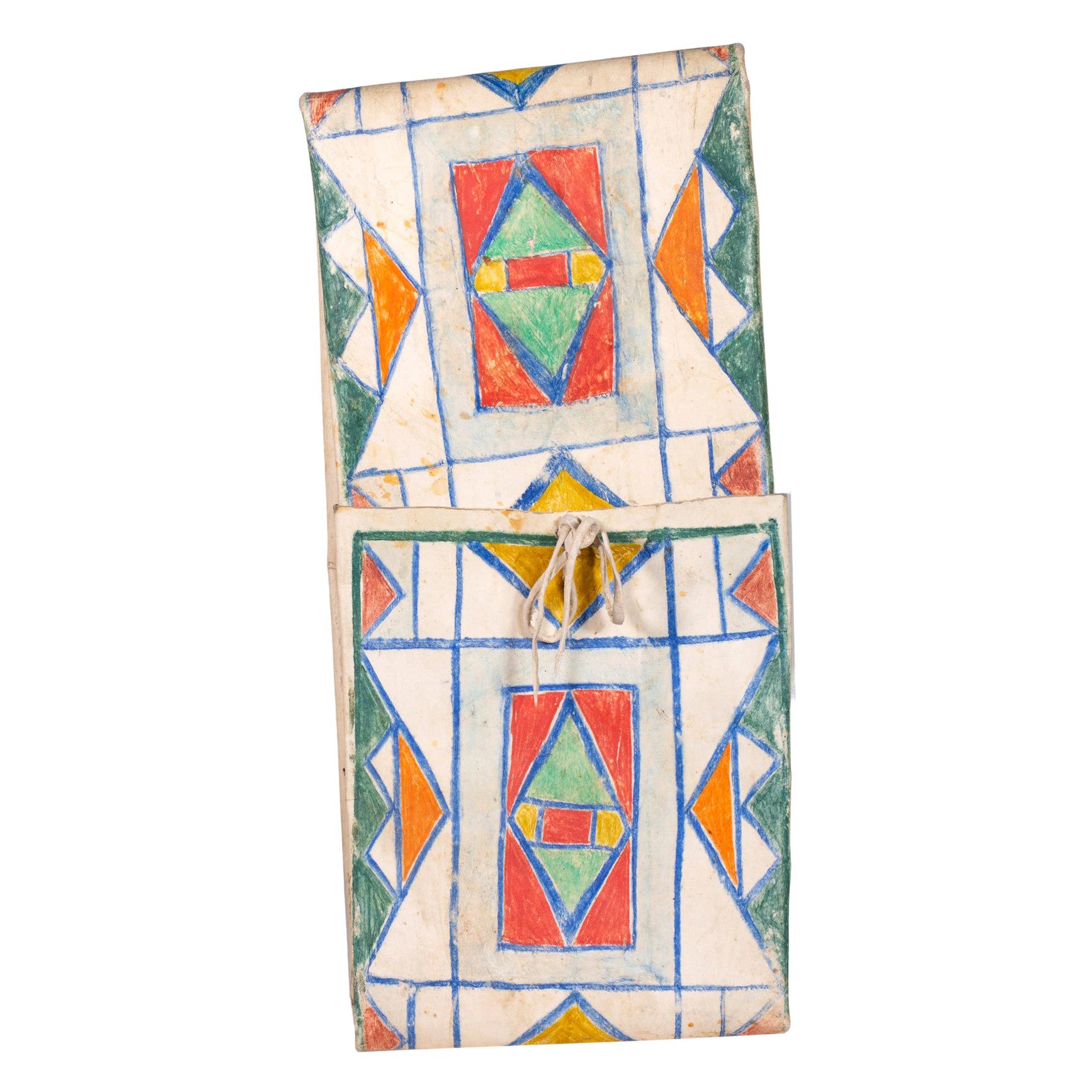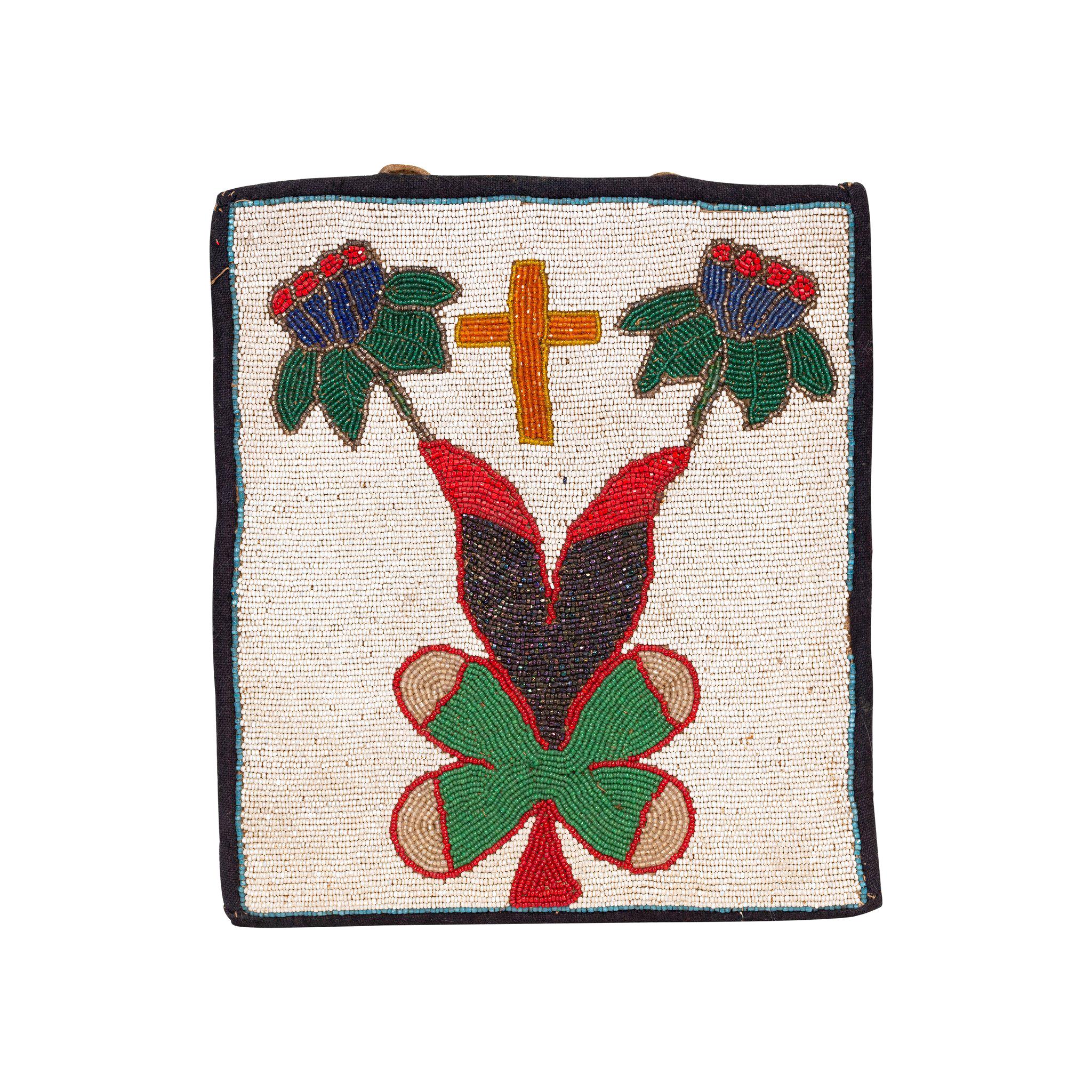Items Similar to 19th Century Plateau Parfleche
Want more images or videos?
Request additional images or videos from the seller
1 of 5
19th Century Plateau Parfleche
About the Item
Plateau parfleche of steer or elk hide, gun barrel scraper used. Ex. LaPlant collection.
Period: Last quarter 19th century
Origin: Plateau
Size: 12" x 24".
Family Owned & Operated
Cisco’s Gallery deals in the rare, exceptional, and one-of-a-kind pieces that define the history of America and the Old West. Our pieces range from American Indian to Cowboy Western and include original items of everyday life, commerce, art, and warfare that tamed America’s frontier. Our 14,000 square foot gallery opened in 1996 in beautiful Coeur d’Alene, Idaho.
Personal Service
Cisco’s operates on old fashioned values – honesty and integrity, and all of our items are backed by our money back guarantee. We appreciate the opportunity to earn your business. Whether you desire assistance with a jewelry purchase, choosing a gift, identification, or even selling – we hope to be your trusted source.
- Creator:Plateau Indians (Maker)
- Dimensions:Height: 24 in (60.96 cm)Width: 12 in (30.48 cm)Depth: 12 in (30.48 cm)
- Style:Native American (Of the Period)
- Materials and Techniques:
- Place of Origin:
- Period:
- Date of Manufacture:1930
- Condition:Wear consistent with age and use.
- Seller Location:Coeur d'Alene, ID
- Reference Number:
About the Seller
5.0
Gold Seller
These expertly vetted sellers are highly rated and consistently exceed customer expectations.
Established in 1996
1stDibs seller since 2018
205 sales on 1stDibs
Typical response time: 2 hours
- ShippingRetrieving quote...Ships From: Coeur d'Alene, ID
- Return PolicyA return for this item may be initiated within 14 days of delivery.
More From This SellerView All
- Pair Plateau Parfleche PacketsBy Plateau IndiansLocated in Coeur d'Alene, IDMatched pair of Plateau parfleche packets with diamonds and stylized flowers and brain tanned ties. Difficult to find a pair. Very nice, rare design. The term parfleche was first co...Category
Antique Early 1900s American Native American Native American Objects
MaterialsOther
- Plateau Parfleche Envelope, circa 1900By Plateau IndiansLocated in Coeur d'Alene, IDPlateau painted parfleche envelope painted in green, blue, orange, yellow and red. Period: circa 1900 Origin: Plateau Size: 28" L x 12" W. Family ...Category
Antique Early 1900s American Native American Native American Objects
MaterialsOther
- Authentic Plateau Beaded Flat BagBy Plateau IndiansLocated in Coeur d'Alene, IDFully beaded Plateau flat bag with floral design having T at center. Faceted beads, floral on white background with one line blue edging and black str...Category
Early 20th Century American Native American Native American Objects
MaterialsBeads
- Native American Plateau Beaded Belt StripBy Plateau IndiansLocated in Coeur d'Alene, IDVery nice fully beaded Plateau belt on saddle leather. Note: all back stitches go through. Colors of greasy yellow, red, white, and blue on leather. Period: Early 20th Century Orig...Category
Early 20th Century American Native American Native American Objects
MaterialsBeads
- Native American Plateau Beaded Figurative BeltBy Plateau IndiansLocated in Coeur d'Alene, ID19th Century Plateau beaded figurative belt. Extra wide with double buckles. Horse dancer, hourglass and geometric motif. Beads of light blue, dar...Category
Antique Late 19th Century American Native American Native American Objects
MaterialsBeads
- Colorful Plateau Cornhusk Native American Sally BagBy Plateau IndiansLocated in Coeur d'Alene, IDColorful Plateau cornhusk sally bag with geometric designs of green, blue and red linen. Canvas reinforced. Period: First quarter of the 20th century Origin: Plateau Size: 6" D x 10...Category
Early 20th Century American Native American Native American Objects
MaterialsOther
You May Also Like
- 1870s Transitional Plateau Rawhide Parfleche Envelope with Geometric PatternsBy Plateau IndiansLocated in Denver, COA parfleche container in an envelope form, finely painted in an abstract design. Makes a stunning wall hanging alone or in a grouping with other parfleche or can be placed on a shelf or Stand. This was created by a North American Indian living in the Plateau cultural area - encompassing portions of what is now northern Idaho, western Montana, northeast and central Oregon, eastern Washington and southeast British Columbia. The tribes from this region include Kalispel, Flathead, Kutenai, Palus, Coeur D'Alene and Nez Perce. Parfleches are rawhide containers which were fundamental to the Plains way of life. Functioning essentially as protective travelling suitcases, they enabled the nomadic tribes to effectively pursue buffalo herds and migrate between seasonal camps. So critical were they to a nomadic existence that over 40 tribes are known to have historically produced parfleches. Collectively, these tribes inhabited an area which encompassed the entirety of the Plains, as well as the parts of the Southwest, the Transmontane and Western Plateau regions. Parfleches were, out of necessity, robust and versatile objects. They were designed to carry and protect within them anything from medicinal bundles to seasonal clothing or food. In fact, it was because of the containers’ robusticity and variety that parfleches earned their name in the Anglo world. Derived from parer (to parry or turn aside) and fleche (arrow), the word parfleche was coined by 17th century French Canadian voyageurs and used to describe indigenous objects made from rawhide. Despite their common utilitarian function, parfleches served as one of the major mediums through which Plains Indian tribes could develop their long-standing tradition of painting. In fact, it is in large part due to the parfleche that tribal style emerged. Even though parfleche painting developed simultaneously with beading and weaving, painting as an artistic tradition held particular importance in tribal culture. Believed to have evolved from tattooing, it had always been used as a conduit through which tribal and individual identity could be expressed. As such, many tribeswomen were deeply committed, some even religiously, to decorating their parfleche either with incised or painted motifs that were significant to them and/or the tribe. For some tribes, such as the Cheyenne, the decorative processes which surrounded parfleche production were sacred. For others, it seems that their parfleche designs shared an interesting artistic dialogue with their beadwork, indicating a more casual exchange of design motifs. This particular relationship can be seen in Crow parfleche...Category
Antique Late 19th Century North American Native American Native American...
MaterialsHide
- Native American Parfleche Box, Sioux, 19th Century Painted Hide PlainsBy Sioux Indian ArtLocated in Denver, COAntique Sioux (Native American/Plains Indian) Parfleche in a box form constructed of rawhide and intricately painted in an abstract design with hourglass and geometric motifs with natural pigments and red trade cloth. At the time this was created, the Sioux Indians were nomadic and are associated with vast areas of the Great Plains of the United States including present-day North and South Dakota, Minnesota, Nebraska and Montana. Authenticity is guaranteed. Box is in very good condition - please contact us for a detailed condition report. Parfleches are rawhide containers which were fundamental to the Plains way of life. Functioning essentially as protective travelling suitcases, they enabled the nomadic tribes to effectively pursue buffalo herds and migrate between seasonal camps. So critical were they to a nomadic existence that over 40 tribes are known to have historically produced parfleches. Collectively, these tribes inhabited an area which encompassed the entirety of the Plains, as well as the parts of the Southwest, the Transmontane and Western Plateau regions. Parfleches were, out of necessity, robust and versatile objects. They were designed to carry and protect within them anything from medicinal bundles to seasonal clothing or food. In fact, it was because of the containers’ robusticity and variety that parfleches earned their name in the Anglo world. Derived from parer (to parry or turn aside) and fleche (arrow), the word parfleche was coined by 17th century French Canadian voyageurs and used to describe indigenous objects made from rawhide. Despite their common utilitarian function, parfleches served as one of the major mediums through which Plains Indian tribes could develop their long-standing tradition of painting. In fact, it is in large part due to the parfleche that tribal style emerged. Even though parfleche painting developed simultaneously with beading and weaving, painting as an artistic tradition held particular importance in tribal culture. Believed to have evolved from tattooing, it had always been used as a conduit through which tribal and individual identity could be expressed. As such, many tribeswomen were deeply committed, some even religiously, to decorating their parfleche either with incised or painted motifs that were significant to them and/or the tribe. For some tribes, such as the Cheyenne, the decorative processes which surrounded parfleche production were sacred. For others, it seems that their parfleche designs shared an interesting artistic dialogue with their beadwork, indicating a more casual exchange of design motifs. This particular relationship can be seen in Crow parfleche...Category
Antique Late 19th Century American Native American Native American Objects
MaterialsHide
- 19th Century Native American Corn Husk Plateau BagLocated in Los Angeles, CAThis very fine exceptional early 19th century native American Indian corn husk plateau bag. Fine condition with a fantastic patch repair on one side.Category
Antique 19th Century American Adirondack Quilts and Blankets
MaterialsWool
- Antique Navajo Weaving Late 19th CenturyBy NavajoLocated in Hudson, NYCirca 1890 Navajo weaving with a very elegant and modern design. Nice mottling of the natural colors, especially in the reds. This is a very bold weaving. This weaving is in good as ...Category
Antique 1880s American Navajo Native American Objects
MaterialsWool
- 19th Century Apache Large Earthenware PotBy Apache Indian ArtLocated in Nantucket, MAAntique Apache Large Earthenware Pot, Second Half 19th Century, a very large hand molded clay spheroid vessel, a classic "Olla," with it's original rawhide netting. Since the Apache ...Category
Antique Late 19th Century American Native American Native American Objects
MaterialsEarthenware
- 19th Century Acoma Pueblo Pottery OllaBy NavajoLocated in Bradenton, FLA very fine Acoma Pueblo, late 19th century polychrome Olla. Painted dark brown and orange design on a white ground, with large areas fired gray. Shrinkag...Category
Antique 19th Century Native American Native American Objects
MaterialsClay
Recently Viewed
View AllMore Ways To Browse
Jewelry America
19th Century American Furniture
19th Century American Antique Furniture
American West Furniture
19th Century American Folk Art
American Antique Jewelry
American Antique And Jewelry
American Indian Antique
Antique Old West
Western American Indian
Antique American Indian Art
American West Cowboy
Antique Native Indian
West Indian Furniture
Antique Native American Indian
Antique American Indian Native American
Antique Native American Indian Native American
Cowboys And Indians





